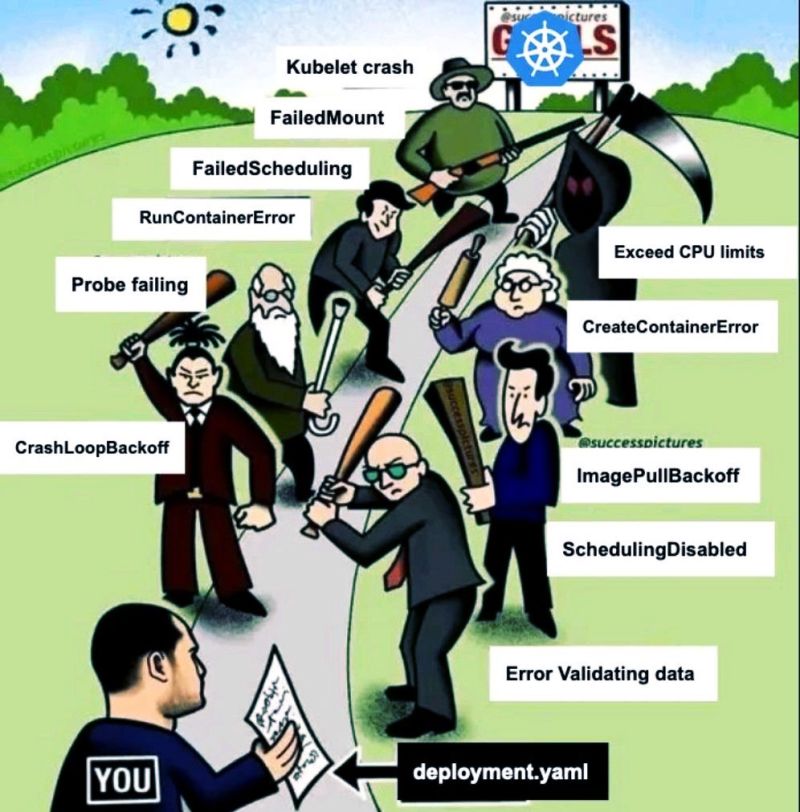
Pods can have startup and runtime errors.
Startup errors include:
✅ ImagePullBackoff
✅ ImageInspectError
✅ ErrImagePull
✅ ErrImageNeverPull
✅ RegistryUnavailable
✅ InvalidImageName
Runtime errors include:
📌
✅ CrashLoopBackOff
✅ RunContainerError
✅ KillContainerError
✅ VerifyNonRootError
✅ RunInitContainerError
✅ CreatePodSandboxError
✅ ConfigPodSandboxError
✅ KillPodSandboxError
✅ SetupNetworkError
✅ TeardownNetworkError
𝑰𝒎𝒂𝒈𝒆𝑷𝒖𝒍𝒍𝑩𝒂𝒄𝒌𝑶𝒇𝒇
❗
✍ This error appears when #k8s isn’t able to retrieve the image for one of the #containers of the Pod.
There are three common culprits:
✅ The image name is invalid
✅ You specified a non-existing tag for the image.
✅ The image that you’re trying to retrieve belongs to a private registry and the cluster doesn’t have credentials to access it.
The first two cases can be solved by correcting the image name and tag.
For the last, one should add the credentials to your private registry in a Secret and reference it in the Pods
𝑹𝒖𝒏𝑪𝒐𝒏𝒕𝒂𝒊𝒏𝒆𝒓𝑬𝒓𝒓𝒐𝒓
❗
✍ The error appears when the container is unable to start before application
Common causes:
✅ Mounting a not-existent volume such as ConfigMap or Secrets
✅ Mounting a read-only volume as read-write
More detailed aspect can be found by describing the ‘failed’ pod
𝑪𝒓𝒂𝒔𝒉𝑳𝒐𝒐𝒑𝑩𝒂𝒄𝒌𝑶𝒇𝒇
❗
✍ If the container can’t start, then #Kubernetes shows the CrashLoopBackOff message as a status.
Usually, a container can’t start when:
✅ There’s an error in the application that prevents it from starting.
✅ You misconfigured the container.
✅ The Liveness probe failed too many times.
𝑷𝒐𝒅𝒔 𝒊𝒏 𝒂 𝑷𝒆𝒏𝒅𝒊𝒏𝒈 𝒔𝒕𝒂𝒕𝒆
❗
✍ Assuming that the scheduler component is running fine, here are the causes:
✅ The cluster doesn’t have enough resources such as CPU and memory to run the Pod.
✅ The current Namespace has a ResourceQuota object and creating the Pod will make the Namespace go over the quota.
✅ The Pod is bound to a Pending PersistentVolumeClaim.
The best option is to inspect the Events section in the “kubectl describe”
- What is Mobile Virtual Network Operator? - April 18, 2024
- What is Solr? - April 17, 2024
- Difference between UBUNTU and UBUNTU PRO - April 17, 2024

